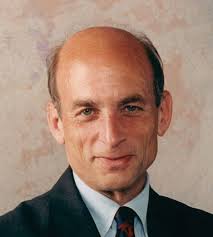Francis Pileggi brings news of an interesting Posner opinion in CDX Liquidating Trust v. Venrock Associates, (7th Cir. March 29, 2011), a case decided under Delaware law. As Mr. Pileggi notes, the case held, among other things, that disclosure of a conflict of a director’s interest may “insulate the agreement from attack, but does not, per se, protect the director from a claim for breach of fiduciary duty.” This is an established principle, but benefits from Judge Posner’s clear articulation. The case also raises some interesting procedural issues.
The case involved a VC’s (Venrock) bridge loan which provided for a substantial payment to the lender in the event of liquidation that would leave nothing left for the shareholders. As Posner says, “[t]he disinterested directors of Cadant [the borrower] * * * who voted for the loan were engineers without financial acumen, and because they didn’t think to retain their own financial advisor they were at the mercy of the financial advice they received from Copeland [who was a director both of the VC and the borrower] and the other conflicted directors.”
The borrower’s board approved a sale of assets for enough to pay off the creditors and preferred (including the VC) but not the common. The sale was approved by a simple majority of both common and preferred voting together and the preferred voting separately. The question is whether the bridge loans were a breach of the VC’s fiduciary duty. Here’s Posner:
The accusation is that the directors were disloyal. They persuaded the district judge that disclosure of a conflict of interest excuses a breach of fiduciary duty. It does not. It just excuses the conflict. * * *
To have a conflict and to be motivated by it to breach a duty of loyalty are two different things—the first a factor increasing the likelihood of a wrong, the second the wrong itself. Thus a disloyal act is actionable even when a conflict of interest is not—one difference being that the conflict is disclosed, the disloyal act is not. A director may tell his fellow directors that he has a conflict of interest but that he will not allow it to influence his actions as director; he will not tell them he plans to screw them. If having been informed of the conflict the disinterested directors decide to continue to trust and rely on the interested ones, it is because they think that despite the conflict of interest those directors will continue to serve the corporation loyally.
I agree that disclosure of the conflict was not enough to eliminate the breach of fiduciary duty issue. But should it be enough for liability to show that the disinterested directors relied on the interested one?
Well, the real problem here is that the trial judge dismissed as a matter of law without getting a jury determination of the issues. Posner has some comments about that which get into nuances of procedure often ignored in teaching (and practicing) corporate law:
We note the questionable wisdom of granting a motion for judgment of law seven weeks into a trial that was about to end because the defendants declared that they were not going to put in a defense case. Reserving decision on the motion might have avoided a great waste of time, money, and judicial resources, as the case must now be retried from the beginning.
And because it will be retried Circuit Rule 36 directs that a new judge be assigned unless the parties stipulate otherwise. Either way the parties and the district court may want to rethink how the case should be submitted to the jury. The original trial was bifurcated along traditional lines, separating liability from damages, and with regard to liability for breach of fiduciary duty the proposed jury instructions required the plaintiff to prove duty, breach, causation, and injury. But the burden-shifting structure of the relevant Delaware law—normally applied by Chancery judges—can be difficult for lay jurors to grasp. Although rebutting the application of the business-judgment rule is similar to proving duty and breach, and proving “entire fairness” is similar to disproving causation and injury, the concepts are not identical. When compensatory damages are sought, proving or disproving that the challenged transaction was made at a “fair price” (evidencing “entire fairness”) might require the same evidence as proving or disproving damages. It may therefore make sense to reconsider on remand whether bifurcating liability and damages is the best approach to take in this case. Bifurcation tailored to the requirements of Delaware law might make the jury’s job easier. One possibility would be for phase one of a bifurcated trial to focus on the plaintiff’s evidence in support of rebutting application of the business-judgment rule and phase two to take up the question of “entire fairness” and, if necessary, damages. But this is a case-management issue, which was not addressed by the parties and is best left to the judgment of the district judge who will retry the case.
More broadly, the incredible uncertainty and complexity inherent inherent in this type of case is an argument for the modern “uncorporate” approach, which favors waiver of all fiduciary duties, including the duty of loyalty, and leaving these issues for custom determination in the agreement. See my Rise of the Uncorporation, and Uncorporation and Corporate Indeterminacy.




